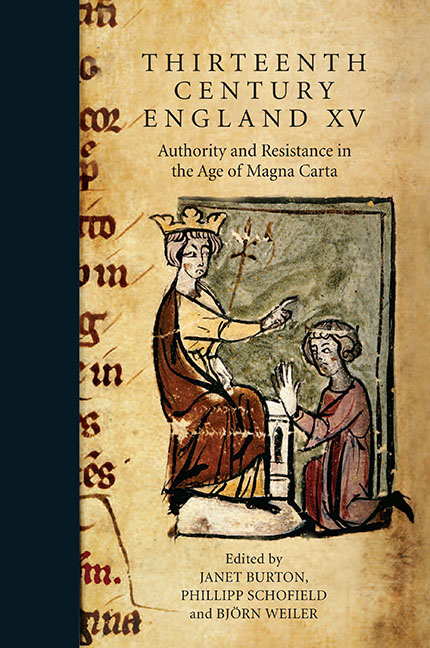 Thirteenth Century England XV
Thirteenth Century England XV Published online by Cambridge University Press: 11 June 2021
This essay investigates the theme of authority and resistance in the microcosm of the late twelfth- and early thirteenth-century Cistercian monastery. Beginning with an examination of Cistercian statutes, this study explores evidence for tensions concerning hierarchy, communal life and ‘individuality’, or perhaps more accurately ‘selfhood’, in the Cistercian Order. It then turns to literary sources to examine how these tensions were expressed, and to an extent resolved, in some of the short narrative accounts that remain from British houses. The evidence shows that despite being highly prescribed, the power relationships within the monastery were, to an extent, flexible and negotiable – and that these didactic narratives, exempla, offer particularly interesting insights into the dynamics of power in this setting.
At first glance, the study of power relations within a monastic community might appear underwhelming compared with the studies of civil and political strife discussed by other essays in this collection. After all, Cistercian life was heavily regulated. The order was founded on a more rigorous interpretation of the Benedictine Rule, the basic premise of which was unquestioning obedience: obedience to the daily routine of offices and labours, obedience to the abbot and, through these, obedience to God. In addition, the detailed rules mapped out by the order's customaries, as well as the statutes promulgated at the annual meeting of the order's abbots, the General Chapter, show how highly regulated power relations within the community actually were. Yet it is the very prescriptive nature of the order that makes it such an interesting case study for the theme of authority and resistance. The amount of written evidence left by the Cistercians not only makes such power relationships particularly visible to the historian, but also allows us to see when these relationships were challenged or subverted, and the strategies that were employed to deal with such behaviour.
Areas of tension
The growing number of statutes issued at the annual General Chapter from the late twelfth century onwards provides clear evidence that the boundaries of authority within the order were repeatedly being tested. While some statutes tackled new problems as they arose, others were re-issued with amendments to cover their application in a variety of circumstances, while yet others reversed previous decisions or granted exceptions. Indeed, while the statutes produced by the General Chapter certainly show the strongly regulated nature of the order, they also reveal that it could be relatively flexible in practice.
To save this book to your Kindle, first ensure [email protected] is added to your Approved Personal Document E-mail List under your Personal Document Settings on the Manage Your Content and Devices page of your Amazon account. Then enter the ‘name’ part of your Kindle email address below. Find out more about saving to your Kindle.
Note you can select to save to either the @free.kindle.com or @kindle.com variations. ‘@free.kindle.com’ emails are free but can only be saved to your device when it is connected to wi-fi. ‘@kindle.com’ emails can be delivered even when you are not connected to wi-fi, but note that service fees apply.
Find out more about the Kindle Personal Document Service.
To save content items to your account, please confirm that you agree to abide by our usage policies. If this is the first time you use this feature, you will be asked to authorise Cambridge Core to connect with your account. Find out more about saving content to Dropbox.
To save content items to your account, please confirm that you agree to abide by our usage policies. If this is the first time you use this feature, you will be asked to authorise Cambridge Core to connect with your account. Find out more about saving content to Google Drive.